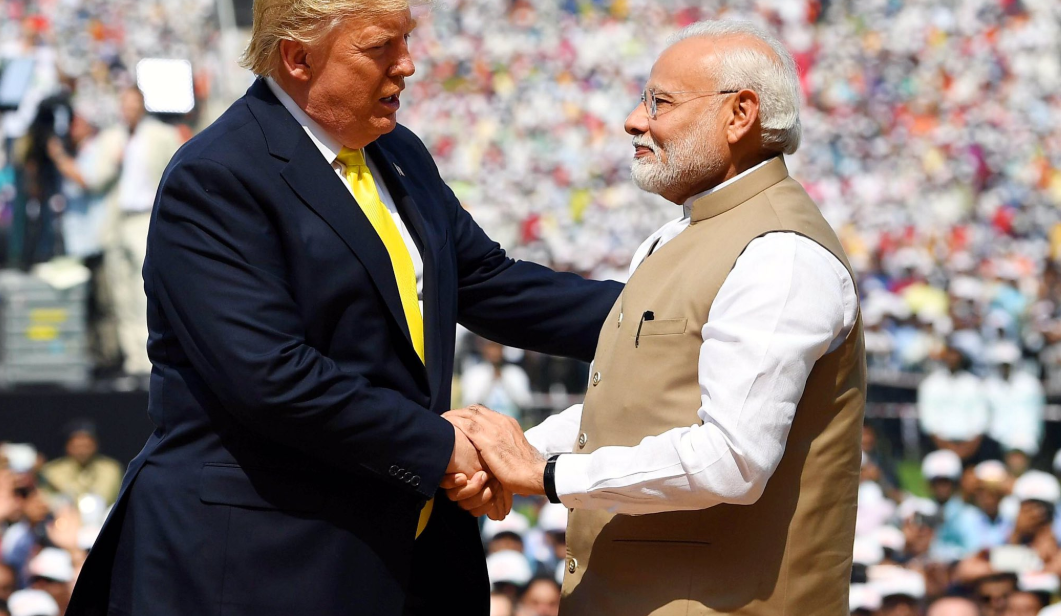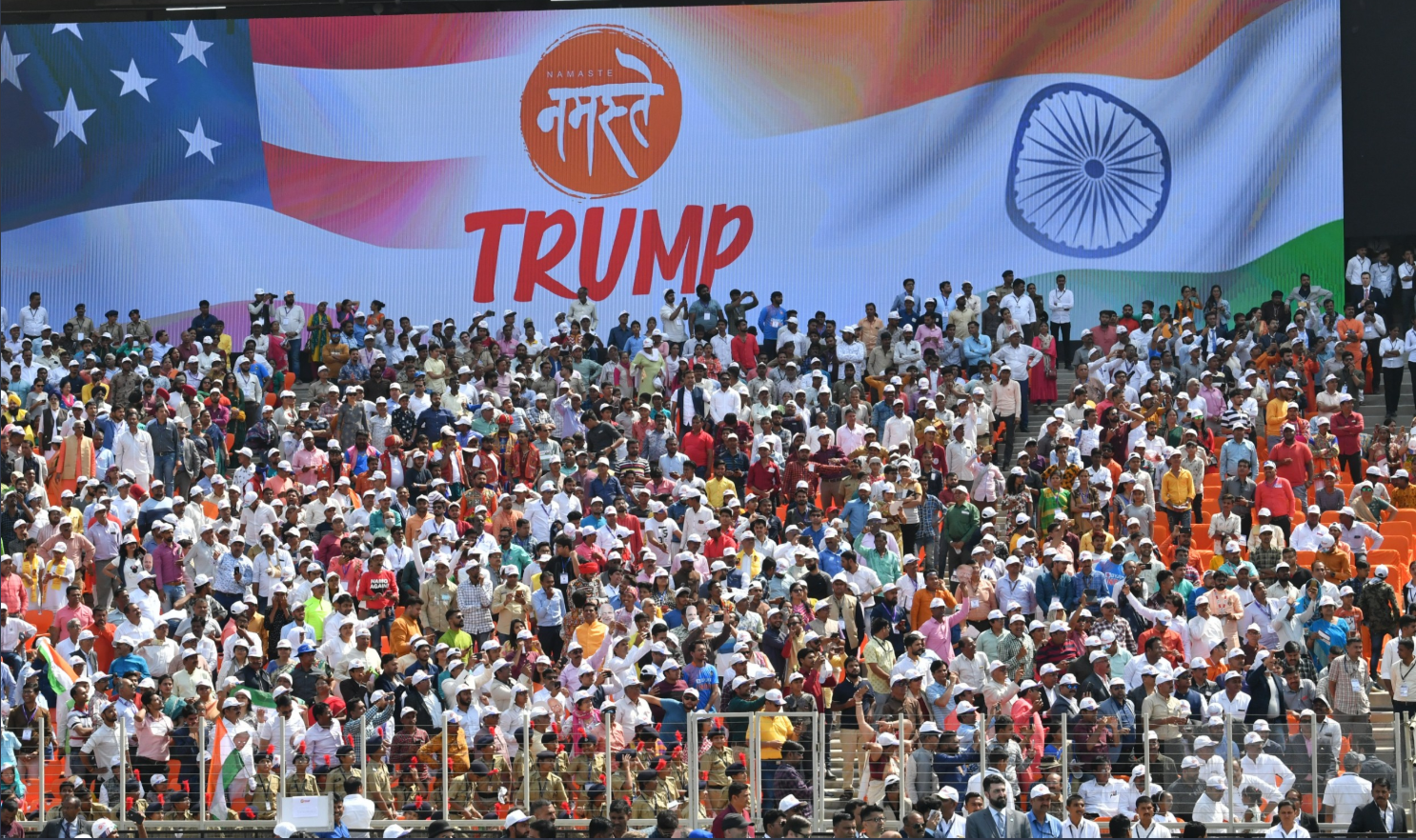
In the middle of a charged election campaign that saw the third presidential impeachment in American history, President Donald Trump flew halfway across the world for a stand-alone visit to India last week, attesting to New Delhi’s rising profile in Washington’s foreign policy thinking. His first visit to the country as president, complete with a reception from a 125,000-strong crowd at the world’s largest cricket stadium, grabbed attention for its high-energy spectacle and display of deepening “bromance” between Trump and Prime Minister Narendra Modi. But more consequentially, New Delhi and Washington upgraded their strategic partnership to a “comprehensive” one—deepening collaboration in defense, security, energy, climate change, trade, technology, connectivity, and health. Even without the conclusion of a much-anticipated trade deal and despite differences over Pakistan, the visit provided further proof of Indo-U.S. commitment to strengthening this “most important partnership,” which is likely to be critical to geopolitical shifts in the Indo-Pacific.
A sign of the success of the trip was how the two sides handled the contentious issue of trade, making an attempt to address the hiccups even if they were not ultimately resolved. In light of continued Indo-U.S. tussle on trade issues such as import tariffs, intellectual property rights, data localization, and e-commerce restrictions, hopes for a deal were quashed before the trip even commenced. However, both sides pledged to work towards a speedy conclusion of a “limited trade deal” worth USD $10 billion, which is expected to restore India’s access to the U.S. Generalized System of Preferences in return for New Delhi suspending its retaliatory tariffs and reducing duties on some American imports. While the deal might be a few months away, progress was made in addressing the perpetually-contentious issue of trade imbalance, acknowledged by both leaders. The United States under Trump has stressed on correcting the trade deficit between the two countries, which is in India’s favor, and U.S. energy exports to India are central to balancing their skewed trade ties. In this regard, the two countries built on the significant increase in American exports and investments in energy recently with Exxon Mobil and Indian Oil signing a deal during this visit to improve India’s natural gas distribution network. This energy partnership signifies Washington and New Delhi’s mutual desire to work through their differences on trade.
A sign of the success of the trip was how the two sides handled the contentious issue of trade, making an attempt to address the hiccups even if they were not ultimately resolved.
Speaking of differences, Pakistan has always been a topic of contention between the two sides. But Trump’s resounding endorsement of India’s “important leadership role” in South Asia in his speech at the “Namaste Trump” rally and their joint acknowledgment of the concern over terror groups operating from Pakistan will be welcomed in New Delhi. Champions of Indo-U.S. relations would also endorse their renewed focus on counterterrorism cooperation during this visit. However, fears in Delhi of a possible destabilizing fallout of Washington’s geopolitical bargain with Pakistan-backed Taliban in Afghanistan remain in place. While the United States has reluctantly leveraged Pakistan’s influence over the Taliban for “bringing peace” to Afghanistan and to execute a smooth withdrawal of its troops from the country, India has repeatedly alleged Pakistan’s use of terrorism as an instrument of state policy, and considers Pakistan as the source of instability in Kabul. For this reason, New Delhi is not likely to have high expectations from what President Trump described as the United States’ “positive” engagement with Islamabad to contain terrorism.

However, despite the slow progress on trade and some disagreement on the approach to terrorism, the trip signaled that it is their strategic partnership in the Indo-Pacific that keeps the Indo-U.S. relationship firmly anchored. Having already invested in a multi-faceted deepening of their cooperation in the Indo Pacific, this visit saw India and the United States committing to enhancing infrastructure development across the region, and—notably— asserting the significance of the Quad (a security dialogue comprising Australia, India, Japan, and the United States) in maintaining regional stability. Through its grey-zone coercion tactics in key maritime zones and acquisition of strategic leverage through infrastructure investments, China has been challenging the rules that have governed this networked region for long. This has subsequently driven unprecedented convergence between erstwhile mutual-skeptics India and the United States, pushing the two sides to provide “demand-driven partnership” to countries in Asia and Africa, in order to counter China’s rising clout. In this context, the two countries discussed the importance of the Blue Dot network, a certification mechanism that accredits global infrastructure projects for adhering to agreed-upon standards and quality requirements. This is seen by observers as a project that will pose challenges to China’s Belt and Road Initiative, which both Washington and Delhi have criticized for lacking transparency and being predatory. The Blue Dot network was developed by the U.S. International Development Finance Corporation together with the developmental agencies of the other Quad partners, Japan and Australia, and will now have a permanent presence in India.
This visit saw India and the United States committing to enhancing infrastructure development across the region, and—notably— asserting the significance of the Quad (a security dialogue comprising Australia, India, Japan, and the United States) in maintaining regional stability.
For its part, the Quad received extraordinary endorsement during this high-powered visit. This grouping has often been victim to cautious downplaying by its constituent countries, largely to assuage Chinese fears about the Quad being an alliance aimed at containing Beijing. However, during this visit, President Trump noted in his remarks that India and the United States are “revitalizing” the Quad to encompass “expanded cooperation on counterterrorism, cybersecurity, and maritime security to ensure a free and open Indo-Pacific.” What was even more significant was the Quad’s mention in the United States-India joint statement after the visit, which could only have happened with India’s approval. This is notable considering New Delhi’s general hesitance to referring to the Quad by name in statements and India’s burdening reputation as the “weakest link” of the grouping.
In addition to deepening their development partnership in the Indo-Pacific, the trip also gave further impetus to Indo-U.S. defense ties. A noteworthy development in recent years has been the rise of United States-India defense trade from almost zero in 2008 to USD $18 billion in 2019. During this visit, India signed an agreement to buy USD $3 billion worth MH-60R naval and AH-64E Apache helicopters from the United States. These purchases are crucial to enhancing interoperability between the militaries of the two countries. They also reiterated their commitment to fostering cooperation in evaluating risks posed by emerging technologies to strategic and critical infrastructure. This was undoubtedly a veiled reference to national security threats emanating from the entry of Chinese vendors, mainly Huawei and ZTE, in the two countries’ 5G architecture.
In further evidence that Indo-U.S. strategic ties have acquired a dimension of invincibility, Trump refused to comment on India’s domestic challenges. In a shift away from past U.S. practice of schooling India on human rights issues, Trump steered clear of opining on the changed legal status of Jammu & Kashmir, the controversy surrounding the Citizenship Amendment Act, and the communal violence that coincidentally ensued in parts of New Delhi during his visit to the city. Despite some U.S. officials and media outlets adopting a critical tone against India, Trump went at length to praise the country’s rise as a democratic, peaceful, and tolerant country whose accomplishments remain “completely unrivalled no matter where you go,” a tongue in cheek reference to the ascent of authoritarian China.
In the end, this visit set a “new normal” for the endurance of Indo-U.S. ties and is a clear indication that an alignment of their strategic priorities in response to shifting geopolitical configurations trumps everything else in their bilateral relationship.
***
Image 1: MEA India via Twitter
Image 2: MEA India via Twitter


